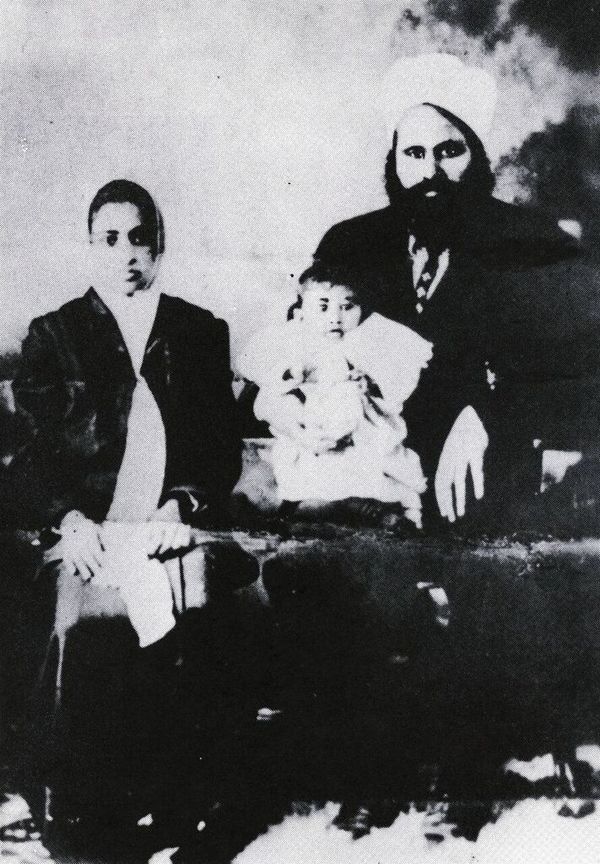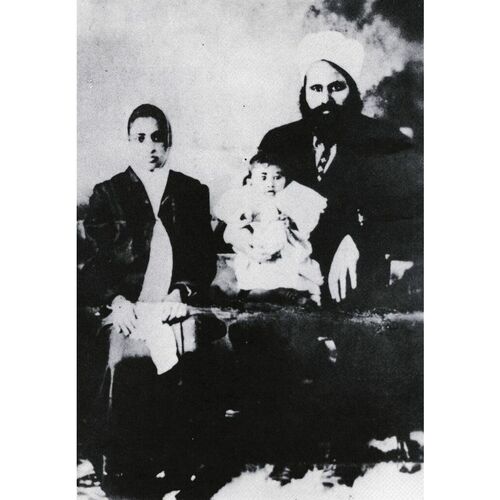
Source: Link
KAUR (Kor), HARNAM, immigrant; b. c. 1886 in Peshawar (Pakistan); m. Bhag Singh, and they had two children; d. 30 Jan. 1914 in Vancouver.
Harnam Kaur was one of four or five women among several thousand Sikh pioneers in Canada. Her immigration case produced a determined agitation among Sikhs in British Columbia and contributed to the adversarial relationship between her people and the authorities in charge of immigration.
Harnam Kaur’s husband, Bhag Singh, who was a Punjabi from the village of Bhikhiwind (Bhikkiwind Uttar), India, had come to Canada in 1906. In Vancouver he became secretary of the Sikh temple and played a prominent role in protesting the country’s exclusionary immigration laws after they were introduced in 1908. In 1910 he returned to India. Early the next year he and Harnam Kaur set out for Canada along with Balwant Singh, a priest at the Vancouver temple, and his wife Kartar Kaur and their two children. They intended to establish the right of wives to join husbands in Canada, and their purpose was well advertised among Sikhs in North America.
Like the other members of the party, in Calcutta and Rangoon (Yangon), Burma, Harnam Kaur was unable to get a direct passage. This predicament existed for all immigrants from India. Beginning in 1908, Canada required them to come by continuous journey, and the government had made the stipulation an absolute obstacle by instructing shipping companies not to issue through tickets. When Harnam Kaur and her companions tried to enter at San Francisco and then Seattle, Wash., they were turned back by the American authorities. Late in the year, in Hong Kong, she gave birth to a boy, who had been conceived after she and her husband left India.
In January 1912 the two families arrived at Vancouver on a steamship from Hong Kong. Because their journey had been broken, they did not meet the requirement of the law. The men were accepted as returning residents but the women and children were ordered deported. In 1910, in a case that had attracted little controversy, immigration officials had accepted the wife of Uday Ram Joshi, a labour contractor, but two years later they were determined not to encourage others. Opening the door to “Hindu” women, the Vancouver immigration agent argued, “would carry with it the permanency of their community in Canada.”
The objections of Sikhs to the exclusion of their families were countered by the ministerial council of Vancouver, the National Council of Women of Canada, and others who shared the concern that once women and children were allowed in, immigrants from India would settle permanently. In June 1912 the minister of the interior, Robert Rogers*, decided to permit Harnam Kaur and Kartar Kaur to stay but made it clear that this ruling was not a precedent. The department made the same concession in two subsequent cases – those of Hira Singh’s wife and Hakam Singh’s mother and four sons. They were allowed entry in July 1912 and July 1913 respectively. Each case was a protracted one, and no further concessions were made although Sikhs continued to raise the issue. Finally, in 1919, after imperial statesmen indicated that Canada’s policy contributed to British difficulties in the Punjab, the wives and children of men with established residence began to be admitted. Sikh family formation in Canada then started.
Harnam Kaur died in 1914 at her home in Vancouver’s Fairview district, nine days after giving birth to a daughter. On the day of her funeral the Vancouver Sikh temple accepted responsibility for her two children. Tragically, their father died in a shooting at the temple later that year. Because there were so few Punjabi women in Canada, the baby girl was placed with a white woman (possibly Annie Singh, the wife of a Punjabi Sikh). When she was six, the temple sent her to India for a Punjabi upbringing. There is no mention in the available records of the fate of her brother after their father’s death.
Norman Buchignani et al., Continuous journey: a social history of South Asians in Canada ([Toronto], 1985). H.[J.M.] Johnston, “Patterns of Sikh migration to Canada, 1900–1960,” in Sikh history and religion in the twentieth century, ed. J. T. O’Connell et al. (Toronto, 1988), 296–313; The voyage of the “Komagata Maru”: the Sikh challenge to Canada’s colour bar (Delhi, India, 1979; 2nd ed., Vancouver, 1989). Kesar Singh, Canadian Sikhs and “Kamagata Maru” massacre (1v. to date, Surrey, B.C., 1989– ). Mahinder Singh Dhillon, A history book of the Sikhs in Canada and California (Vancouver, 1981).
Cite This Article
Hugh J. M. Johnston, “KAUR (Kor), HARNAM,” in Dictionary of Canadian Biography, vol. 14, University of Toronto/Université Laval, 2003–, accessed September 18, 2024, https://www.biographi.ca/en/bio/kaur_harnam_14E.html.
The citation above shows the format for footnotes and endnotes according to the Chicago manual of style (16th edition). Information to be used in other citation formats:
| Permalink: | https://www.biographi.ca/en/bio/kaur_harnam_14E.html |
| Author of Article: | Hugh J. M. Johnston |
| Title of Article: | KAUR (Kor), HARNAM |
| Publication Name: | Dictionary of Canadian Biography, vol. 14 |
| Publisher: | University of Toronto/Université Laval |
| Year of publication: | 1998 |
| Year of revision: | 1998 |
| Access Date: | September 18, 2024 |



